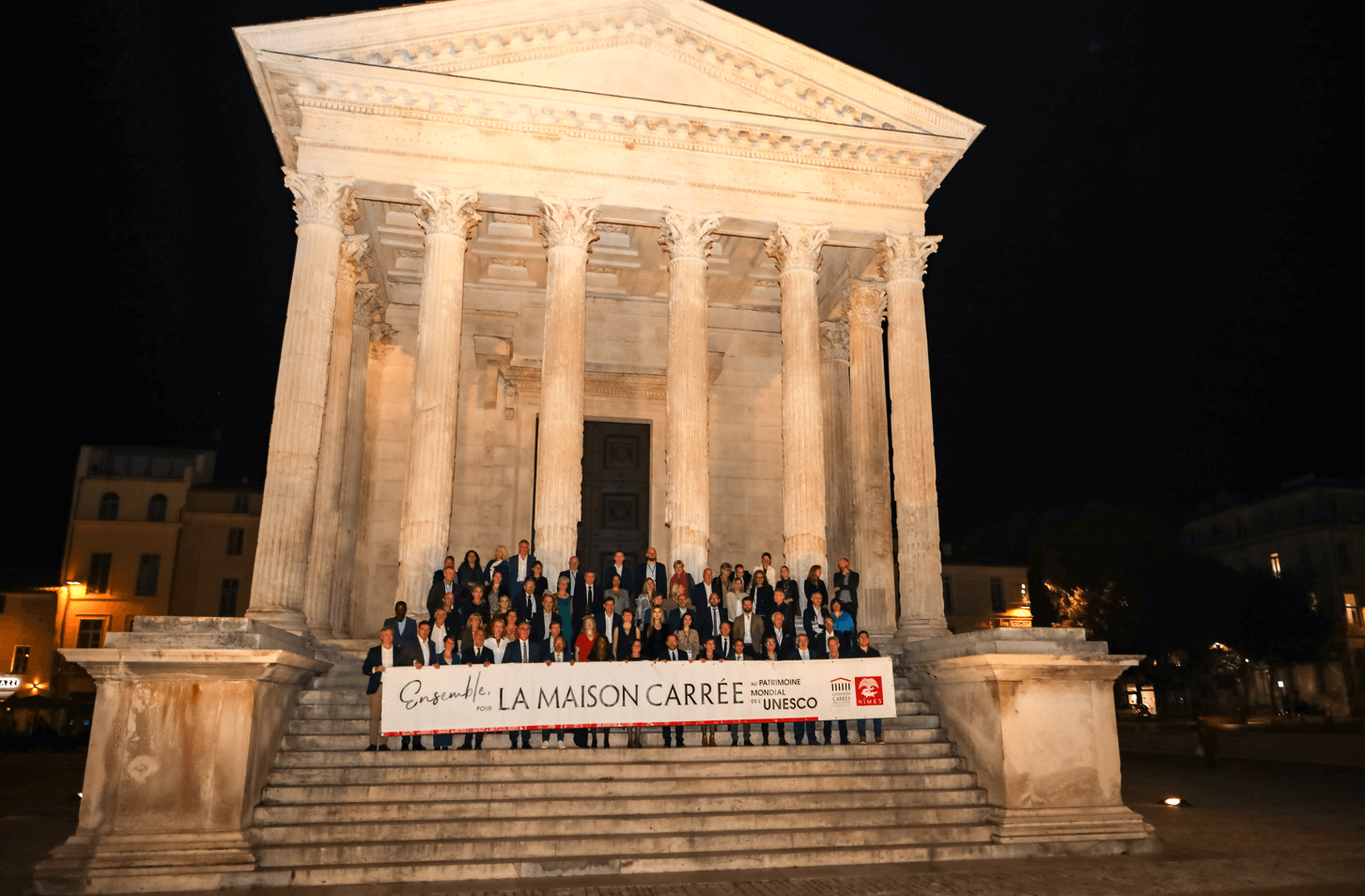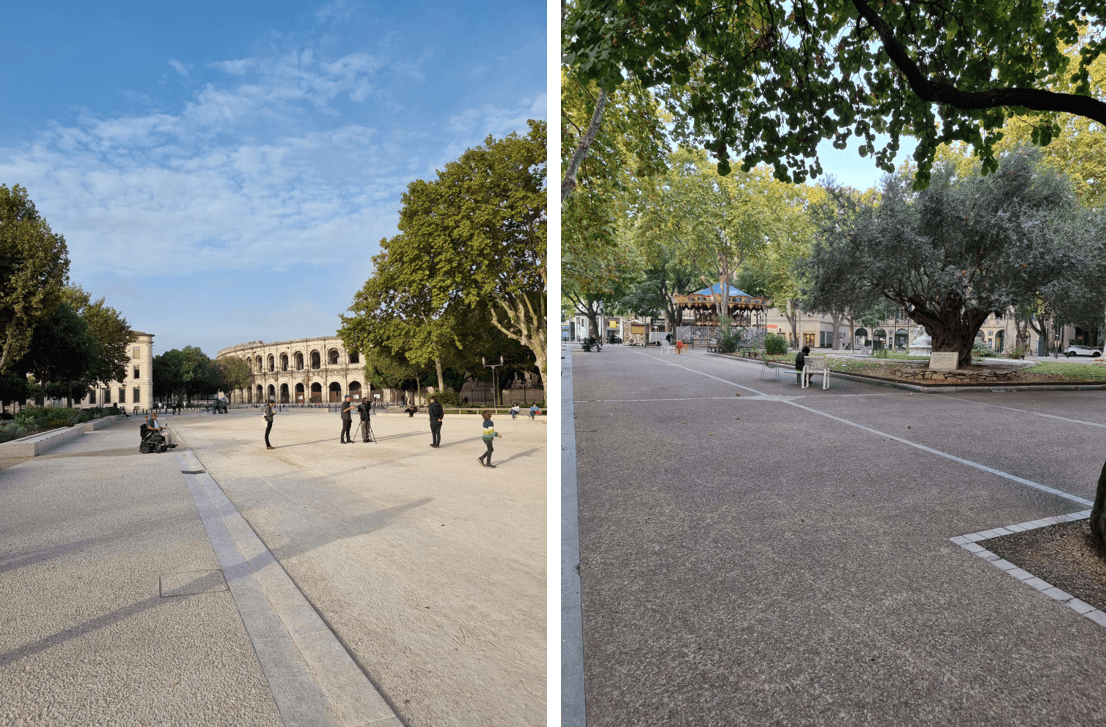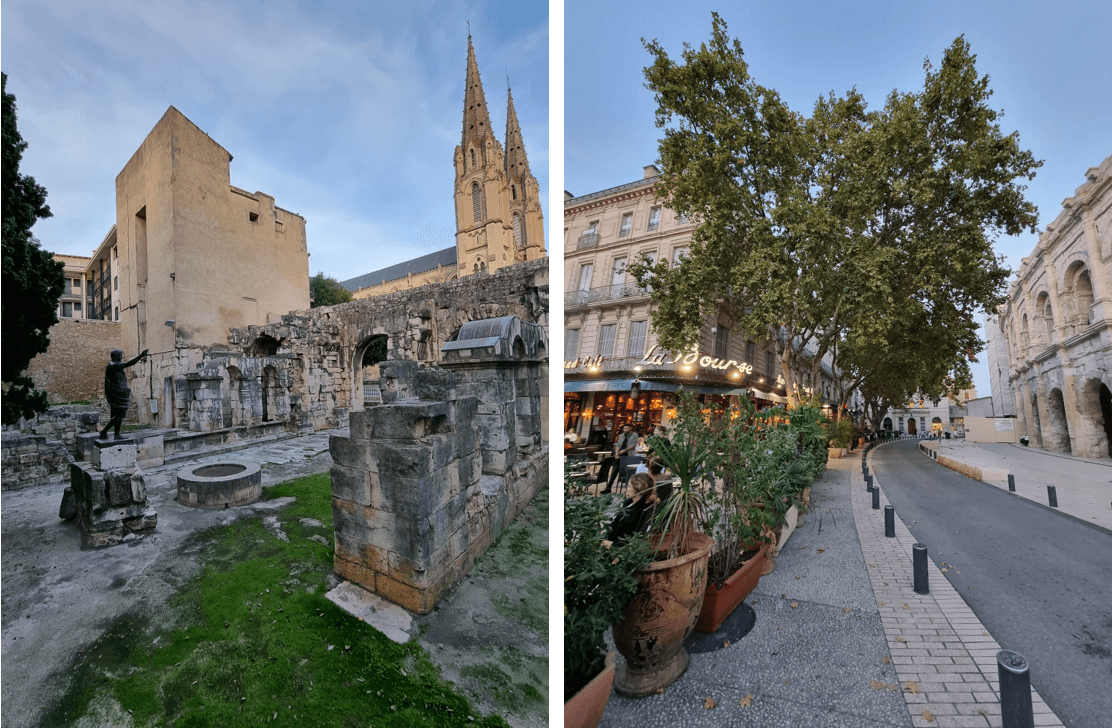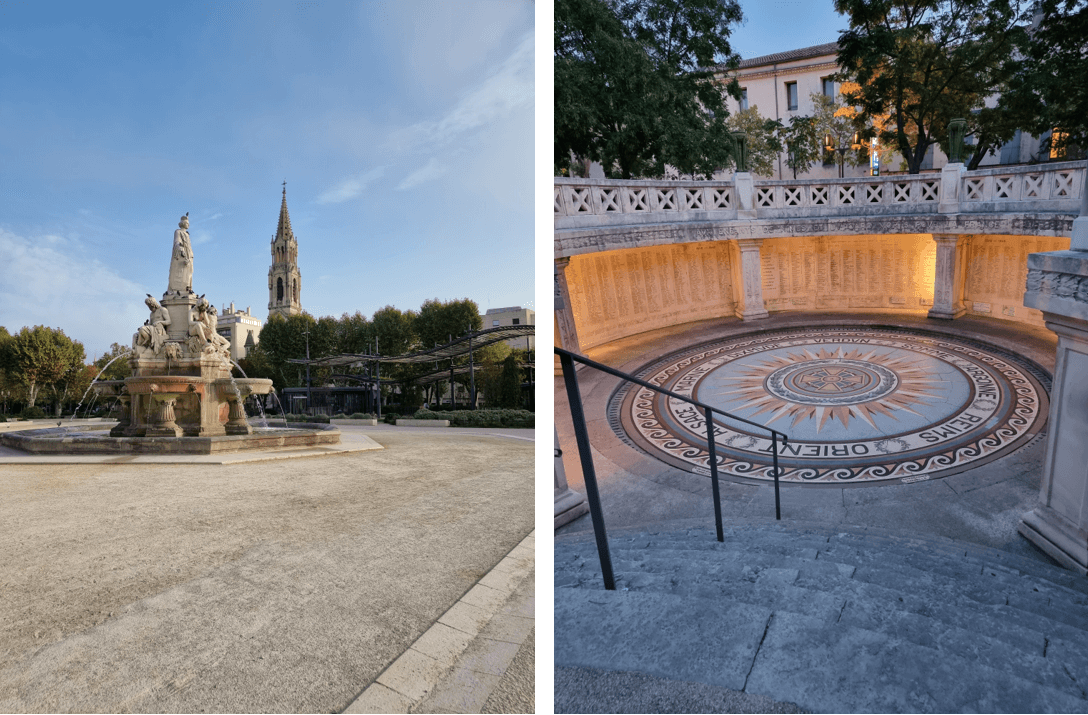Medjimurje Sustainable Tourism Proves Itself, Tourists Willing to Pay More
March the 28th, 2023 - Tourists from across the rest of Europe and indeed the world are ready to pay more for sustainable tourism, and the situation for Croatian tourism is no different. With visitors ready to fork out around 20 percent more, Medjimurje sustainable tourism stands out from the crowd.
As Poslovni Dnevnik/Marija Crnjak writes, as many as twenty years of dedicated and hard work at the level of the entire destination was needed for Medjimurje sustainable tourism to reach a level of sustainability that many are only just beginning to think about.
Confirmation that they're on the right track came back at the beginning of March at the ITB Berlin tourism fair, where beautiful Medjimurje County was declared a Green Destinations region and was awarded the silver Green Destination label. This made it the first region in all of Croatia and the fourth in the world to receive this certification.
''Green Destination'' is a globally recognised non-profit organisation that cooperates with 200 destinations across more than 80 countries of the world, and develops sustainable and responsible tourism in accordance with the principles of the United Nations (UN) and the goals of the Global Council for Sustainable Tourism.
Rudi Grula, the director of Medjimurje County's tourist board, and Nusa Korotaj, the director of the very well known Terme Sveti Martin, which generates an impressive 80 percent of tourist traffic in Medjimurje, spoke about how sustainability has become a lifestyle for the people of Medjimurje at the Place2Go tourist fair.
"The fact that sustainability has become imperative is also showcased by the new policy of the TUI group, which will no longer enter into contracts with hotels that don't have a sustainability certificate. In Medjimurje County, tourism makes up only 2% of the local economy and we see tourism as an activity that will improve the lives of the local population as well. That's why we can freely choose guests who are ready to pay 20% more for all of the services that are carried out in a sustainable way here,'' explained Grula. In the survey that preceded the certification process for Green Destination, as many as 80% of respondents, out of 60% of the total number of stakeholders in the county's tourism who responded to the survey, were in favour of introducing sustainable solutions.
The next step will be the introduction of the Good Travel brand, and a new analysis of the satisfaction level of locals is underway, which is being done for them by the Tourism Institute. The local tourist board frequently realises many projects with Terme Sveti Martin, which is the largest tourist entity in the entire county and also operates in a sustainable manner. For example, as Nusa Korotaj revealed, they have signed contracts with 25 OPGs (family farms) that supply Sveti Martin with local products, grown within a radius of 15 kilometres.
As many as 80% of employees working at Terme Sveti Martin are locals, and since many of them work the land, with the project ''Work, earn extra'', the company offered them to open their own OPGs and be priority suppliers, so that a waiter can also brag to his guests that they're eating zucchini that he grew himself.
Local products are more expensive than those we can purchase in retail chains, that's true, but this way we have foods we know the origin of and we know exactly who grew them, with extremely short supply chains. In addition, we support the surrounding restaurateurs, so we send our guests to eat at their restaurants, we also have packages in which guests can exchange dinner at our hotel for a local restaurant. In order to appreciate these locally grown foods even more, we introduced a programme to reduce food waste, after we determined that we were throwing 200 kilograms of food into the compost every single day. In order to reduce this, we reduced the number of plates at breakfast and reduced food waste by 40% on the first day," said Korotaj.
The road to sustainability is often paved with a lot of small steps, and the next one is to convince restaurateurs to stop serving biscuits wrapped in cellophane with their coffee, but rather to serve biscuits in bulk. At the same time, through promotion, they also educate the guests, who not only appreciate these solutions, but also look for them themselves. In fact, research by the Expedia portal showed that this year as many as 65% of travellers will look for some form of sustainable service in tourism, while companies will invest significantly more in marketing through which they show what they are doing to contribute to sustainable development.
For more, make sure to check out our news and travel sections.
AWFT22 Reflections for Croatia: City of Nimes, Sustainable for 2000 Years
November 1, 2022 - The second edition of the first world forum dedicated to the transformation of the tourism industry, A World For Travel, was held in Nimes, France, from 27 to 28 October. TCN was there to learn about sustainability in travel and tourism. From a journalist's perspective, there was plenty of talk that seemed unactionable or unaccessible to the everyday person. Still, the forum did achieve its primary goal and made us think about the threats that the industry is facing and the fact that there is an urgent need for a change of direction. As for Croatia, there were no representatives, but the hope is that next year's forum will bring a lot more for this tourist destination where the question of sustainability remains very important.
In TCN, we had a chance to sit with the organisers, the representatives of Bosnia and Herzegovina, Ukraine, large and small businesses that focus on sustainable travel, and other media professionals who have worked on covering this vital topic. Our interviews and reflections are coming in the following days, all with the underlying thought of how Croatia is doing and where we are headed. Before we get to that, let us share what we learned from the city of Nimes.
Nimes was chosen for several reasons: its privileged location on the Rhone Valley-Italy-Spain axis with three direct motorway exits, 2 TGV stations with connections to Paris and Roissy airport, and to the main cities and their airports, not forgetting access to the TER network.
This ancient city is where history has left its mark for 2,000 years, as evidenced by the three main monuments: the amphitheatre, the Maison Carrée, and the Tour Magne, buildings that are today among the best preserved in the world. The vast restoration project of the Nimes amphitheatre, undoubtedly the largest undertaken in France at the beginning of the 21st century, demonstrates the common will to fully assume the heritage that is the pride of the City of Nimes, to preserve it and to transmit it. This restoration concerns the entire monument and is the most important one it has undergone since its origin. It is being carried out without interrupting the public's use of the site and its use for the many shows it hosts, as it has retained its primary function as a performance venue. This project follows the equally exceptional restoration of the Maison Carrée, which took place from 2006 to 2010. This monument represents one of the oldest and best-preserved expressions of a Roman temple dedicated to imperial worship. Its remarkable architectural quality also bears witness to the values of lasting peace, harmony and prosperity that the Roman Empire promoted and sought to guarantee in the first century AD.

These restoration projects are all the more exceptional because the stones used are still extracted today from the same quarries used by the Romans 2,000 years ago. Did you say sustainable? The unique character of the ancient temple has motivated the city to apply for World Heritage status, an application that will be studied at the next UNESCO session. The protection of its ancient heritage, but also its enhancement, has been the backbone of the numerous urban redevelopment projects that have taken place over the last few decades.
In a constant concern to embellish and improve the living environment of the inhabitants and to make the city accessible to as many people as possible, many improvements have been made to facilitate the use of the city on foot and the organisation of events in the historic centre, not forgetting the connection with the transport network. The principle of intermodality prevails in the urban regeneration programmes and is reflected in the creation of high service level bus lines connected to park-and-ride facilities at the city entrances. A bicycle plan completes the package and is being developed in connection with the cycle paths and European routes that cross the territory.

Improving the living environment and protecting the inhabitants from the vagaries of nature are priorities for the City, which has developed particularly innovative monitoring and warning tools, of which it was a pioneer. For more than thirty years, the City has been developing a substantial system to protect itself from climatic hazards and to preserve human lives as well as everything that contributes to economic development, including infrastructure. Residents, businesses, local media... all share the culture of risk and the imperative need to respect the measures provided for in the event of a crisis, in the interest of all.
Among the tools at its disposal, Nîmes has adopted a local town planning plan. While it restricts certain constructions and limits urban sprawl, it also guarantees the optimisation of buildable areas by rebuilding the city on itself. The development of numerous gardens and natural spaces, which are essential to avoid rainwater runoff, offer year-round peaceful and recreational spaces to a population that appreciates the conviviality of a human-sized territory. Designed for its inhabitants, these facilities are just as beneficial to the many visitors that Nîmes welcomes throughout the year to discover its heritage or to take part in a cultural or sporting event, or even one of the unmissable events that take place in the Roman city, such as the Emperor's Games, which take its visitors back to antiquity.

Nimes offers a calendar of events throughout the year in order to provide 4-season tourism and thus spread visitor numbers over the year. Ranked as the 8th greenest city in France according to the Green Cities Observatory and oxygenated by 372 ha of public spaces and 1,080 ha of natural spaces, it has been awarded 4 flowers in the Villes et Villages fleuris (Cities and Villages in Bloom) label and practices ecological management of its green and natural spaces, which is totally in line with the principles of sustainable development.
The city is committed to a sustainable approach with the implementation of global energy performance contracts, particularly in its museums, reducing its expenditure by more than 20% by 2021. It is also stepping up the development of its photovoltaic park and is continuing its work to obtain certification (Eco Réseau label, Sustainable Buildings Occitanie, etc.) to reduce energy consumption. The plan is to reduce the energy consumption of all its buildings of more than 1,000 m² by 40% by 2030 to comply with the requirements of the RTRénovation and RE2020 regulations.

Nimes Tourism, in its capacity as a Destination Management Organisation, is accompanying the destination's professionals in a classification and labeling process, in collaboration with the CRTL Occitanie, which has placed this theme in its strategy. Already holding several labels, it is also committed to the ISO 20121 approach to strengthen its actions in terms of sustainable tourism.
In conclusion, while the participation of Nimes in the A World for Travel forum was definitely an excellent marketing move by the town's officials, it wasn't empty promises. The city of Nimes is a truly fascinating little place, where you can feel the effort that has been put into making it a sustainable destination. Lots for Croatia to learn, definitely. And Nimes is not the only place that can teach us something. Next up in our AWFT series: what our neighbours have been up to.
For more, make sure to check out our dedicated Travel section.
European Sustainable Tourism Plan Looks to Croatian eVisitor System
February the 15th, 2022 - Croatia certainly loves to sit back and count the overnight stays during the tourist season, but as sustainable tourism becomes the direction in which more and more countries are heading in, how much can other countries look towards the Croatian eVisitor system for inspiration?
As Poslovni Dnevnik/Marija Crnjak writes, in the near future, EU member states will no longer measure their tourism results through arrivals and overnight stays being registered, but with the help of digital technologies and artificial intelligence, unique, standardised tools will be developed to monitor EU-wide social, environmental and economic impacts.
So far, the deadlines for the introduction of these new metrics haven't been defined, which will include changes in legislation and a number of new infrastructure solutions, but national tourist boards will play a key role in this.
The experience of the Croatian eVisitor system could have a significant impact on the process, as has since been learned. The plan for the introduction of new statistical methods for monitoring the results of tourism, with the introduction of sustainable solutions and digitisation is the most important topic of the just published report of the European Commission (EC).
It is a document that confirms the agreement of EU tourist boards to implement new tourism metrics and to give priority to both residents and tourists when it comes to tourism services, instead of harmfully imposing the number of nights as the only criterion for growth and development.
The report was created together with the destinations of the European Union and industrial players. Some analysts of global trends suggest it could be a turning point for the future of EU tourism, while others are skeptical about its future implementation, which has not yet been defined.
"We believe that European national tourism organisations should be the European Commission's main partner and play a major role in implementing these solutions in the coming years. While most have well-established tools to provide a wide range of key performance indicators related to the quantitative economic aspects of tourism, most still struggle with the lack of a broader picture of the impact of tourism,'' said Luis Araujo, President of the European Travel Commission.
He is convinced that expanding metrics and coordination at European Union level will significantly facilitate the sustainable transition of destinations. The Croatian National Tourist Board (CNTB) will also actively participate in the process.
"This is a document created in the context of pandemic-induced disorders and which, among other things, emphasises the need for more sustainable tourism and tourism that is more resilient to crises. Green and digital transitions stand out as key, especially in areas such as sustainable competitiveness, legislation and policy, technical solutions and infrastructure. Great emphasis has also been placed on the collection of other types of data, such as tourist traffic, as well as environmental, economic and social indicators.
In this regard, the ETC and national tourism organisations are already working to establish a single set of indicators that could monitor and compare European Union destinations in terms of the impact of tourism and tourism sustainability,'' the CNTB revealed.
They also added that the CNTB can contribute to the collection and processing of this data with existing solutions, such as the world's unique technological solution for monitoring and analysing tourist traffic, the Croatian eVisitor system, but also by developing new smart digital solutions and services and improving knowledge and skills, as well as the further development and management of tourist destinations and products.
They also added that various national documents that are being drafted, the Strategy for the Development of Sustainable Tourism until 2030 and the National Plan for the Development of Sustainable Tourism from 2021 to 2027 should also contribute to the process.
For more, check out our travel section.
Croatian Sustainable Tourism Experts to Receive 1.3 Million Kuna
June the 22nd, 2021 - Croatian sustainable tourism experts are set to recieve a large sum of money for the promotion of this sort of tourism which has so much appealed to Croatia and which could bring about a longer season.
As Poslovni Dnevnik writes, the Ministry of Tourism and Sport announced a tender worth more than 1.3 million kuna for the development of Croatian sustainable tourism projects last week. As part of the EUSAIR Facitiy Point project, a financially attractive budget has been provided for the development of adopted project ideas for the development of sustainable tourism in the Adriatic-Ionian region, up to the stage of readiness for application and funding from EU funds.
Croatian sustainable tourism experts are expected to make a quality contribution in six months of the contract for topics that have been discussed and deemed important in the professional public for some time now. Expanding the tourist offer through the development of thematic tourist routes and merging that with cycling tourism, the stronger involvement of cultural heritage, the synergy of creative and cultural industries and the hospitality sector, connecting those engaged in tourism through regional and transnational projects and research - these are just some of the demands for those tasked with this job.
Important elements in the tender documentation state goals such as the development of new educational programmes for tourism professionals, the training and development of competencies for the unemployed, and the development of networks of Croatian sustainable tourism companies and clusters. An important component of the task is education and association, as well as the implementation of a system for sustainable destination management.
Potential bidders for this tender should provide two key experts for the development of project proposals with experience in EU projects. Procurement is divided into four groups, and each group consists of the development of one project, whose project idea has already been accepted by the managing authorities of the Adriatic-Ionian Strategy.
The CruiseAIR project, whose key goal is to prepare management plans for sustainable cruising tourism destinations. AIR Cultural Routes is a project aimed at developing tools for the integrated sustainable management of cultural routes at the level of the Adriatic-Ionian Strategy and achieving a balanced distribution of tourist flows. The goal of the ProDest AIR (MIQS) project is to develop a strategy and system for smart, sustainable, integrated destination management at the EUSAIR level and to design systems capable of responding to all real development challenges, needs, constraints, trends, risks and threats. The Living the Sea 4.0 project aims to expand the tourist offer through the digitisation of fisheries and their heritage and increase the availability of a common fishing history for the entire region.
The documentation for this open high-value public procurement procedure was published in the electronic public procurement notice on the 14th of June. The deadline for submission of bids is July the 26th, by 10:00. The Ministry of Tourism and Sport, together with their Albanian colleagues, is coordinating the topic of Sustainable Tourism for all ten countries of the Adriatic-Ionian Strategy, and winning such a job would be another opportunity and recognition for Croatian sustainable tourism experts.
For more, follow our travel section.
Sustainable Tourism in Dubrovnik - What Steps Can You Take?
As you all know, the beautiful city of Dubrovnik is located along the sparkling waters of the Adriatic, and attracts people from all over the world for its bright blue sea, medieval walls and Game of Throne’s filming spots.
Tourism in Dubrovnik has sky rocketed in the past few years, and a lot of it has to do with the Game of Thrones’ filming locations, which brings 60,000 tourists a year just for that particular reason.
It was reported that in a single day in August of 2016, over 10,000 tickets were bought to walk Dubrovnik’s famous city walls. This heavy influx of tourism has caused excessive pollution, the destruction of animal habitats, and it overloads the infrastructure as well as threatens the culture and heritage of the city. The limestone of Stradun has been gradually smoothed down from thousands of people walking along it with each tourist season, so much so, that the city has had to manually create texture on the limestone with hammers to create some kind of slip resistance.
The prices of homes in Dubrovnik’s Old Town have increased because of the amount of houses being turned into Airbnb’s to accommodate tourists. This destroys a sense of community and inflates the price of property. It has been reported that today only 1,157 people call Dubrovnik's Old City home, compared to 5,000 in 1991. Many argue that Dubrovnik is on its way to become the next “Disneyland”, which has already happened in places like Venice, just across the Adriatic.
Along with the threat of the city turning into a place that does nothing but cater to its many foreign visitors, over construction along the coast is threatening the biodiversity of the land, as well as pollution from the thousands of visitors who walk through the streets of Dubrovnik each day. Dubrovnik is a beautiful city that has a rich history, and it's a no brainer why people want to go within the city’s walls. There needs to be a solution that allows visitors to travel to this uniquely alluring city on the Adriatic, but in a way in which such trends won't destroy the land and the culture.
Any tourist who is interested in planning their next trip to Dubrovnik should see if they're meeting a standard checklist that will keep over tourism from saturating the city. This checklist should make foreign travellers consider the following,
Is the place you are staying at owned by locals?
Are you supporting local businesses and contributing to the economy versus buying items at manufactured souvenir shops?
Are you participating in any excursions that do not respect the environment?
Are you respecting the locals’ culture?
Do you clean up after yourself when visiting the hiking trails or beaches?
By promoting and implementing the use of a kind of checklist for tourists to use to keep these questions in mind when visiting Dubrovnik, visitors and locals are ensuring that there is a way to coexist in a positive manner, where the economy can prosper, and continue to make Dubrovnik a thriving destination for people from all over the world. Making visitors aware of sustainable tourism through promotional advertisements or a simple brochure when they enter Dubrovnik’s walls has the potential to influence their actions.
By supporting local businesses, treating the land as if it were your own, and respecting Dubrovnik's way of life, it is ensuring that the long-term development of tourism in Dubrovnik is sustainable and promotes the harmony of the local economy, the environment and the cultural/social aspects of the city.
SOURCE(S): Overtourism in Dubrovnik from Responsible Travel. (n.d.). Retrieved here.
Make sure to follow our dedicated lifestyle page for much more. If it's just Dubrovnik you're interested in, give Total Dubrovnik a follow or find out all you need to know about the Pearl of the Adriatic with Dubrovnik in a Page.
Croatia’s Eco Tourism Future: Could A Resort In Lika-Senj County Lead The Way?
August 1, 2018 — Several signs show the green, eco-conscious tourism industry has attracted investors, who see potential in the still-nascent sector.
5 Ways to be a Better Tourist in Croatia
"Sun is shining, the weather is sweet…" with Spring upon us here in Croatia, the tourist season is fast approaching, so we wanted to give some tips on how to be a better tourist.


